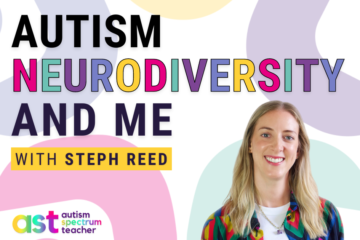Table of Contents
Sensory Resources
As a teacher, I have used a range of sensory equipment in the classroom to support individual sensory needs.
An Occupational Therapist (OT) is the professional who can support you to assess the sensory needs of a child in order to direct you to appropriate equipment to meet their sensory needs. Each child will have very individual sensory needs. Sometimes, sensory needs can be obvious such as a child covering their ears, indicating sound sensitivity. Other sensory needs can be less obvious and may require assessment such as via building a sensory profile which an Occupational Therapist can support.
Sensory needs can be categorised into two areas:
Hyposensitivity: under sensitive to sensory input
Hypersensitivity: over sensitive to sensory input
Sensory equipment I have used with success in my class (with links)
Ear Defenders
Ear defenders block out certain noise frequencies and can support a child to access environments that they are sensitive too. Perhaps they avoid these situations completely or they do so whilst putting their fingers in their ears. Examples of environments and situations where ear defenders have supported children I have taught include; when using the hand dryer, in the noisy dinner hall and when out in the playground.
Vibrating Cushion and Toys
For one child in particular, a vibrating cushion really helped to support his hyposensitive needs. This child would often seek physical input by pulling adults arms and legs into his face and body. He often jumps up and down and does not like to stay seated for long periods of time. A vibrating cushion gives him the physical, sensory input he seeks and this is very noticeable because when he is using it (on his lap or on his feet), he appears much more relaxed and he sits down throughout lessons. The vibrating cushion clearly helps to support his sensory needs.
Vibration can be very effective for some individual’s. For one child, I initially tried a small soft vibrating toy.
He particularly liked putting it near his mouth. This child in particular would seek a lot of sensory input around his chin by tapping and pushing it.
Gym Ball
A gym ball is great for enabling a child to take part in movement activities. I have taught many children who enjoy sitting on a gym ball and bouncing up and down, gaining pressure in various parts of their body. These balls can also enable a child who seeks bouncing movement from an adult (i.e. for an adult to hold them and bounce them up and down), to do this safely and independently.
Move 'n' Sit Cushion
These cushions are great for allowing movement whilst seated due to the cushion being filled with air, giving a feeling similar to sitting on a gym ball. The Move ‘n’ Sit cushions can be used on a chair or whilst sitting on the carpet. Recently, this cushion has enabled a child who would swing on their chair, to move safely whilst seated and allows movement for another child who often rolled backwards whilst sitting on the carpet with his class.
Weighted Blanket
A weighted blanket can give pressure due to the weights inside it. One child I have taught would seek pressure around his body by lying underneath his mattress at home and P.E mats at school. We therefore used a weighted blanket in his classroom as a safe alternative to give him the pressure he seeks.
Lap Weight
Lap weights are a smaller version of a weighted blanket and are great to use whilst the child is seated during lessons, whilst eating and when on the school bus or in the car.
Please seek advice from your local Occupational Therapist about suitable and appropriate sensory equipment to meet your child’s sensory needs.
Do share any comments about sensory equipment that has been successful for your child/ children!









